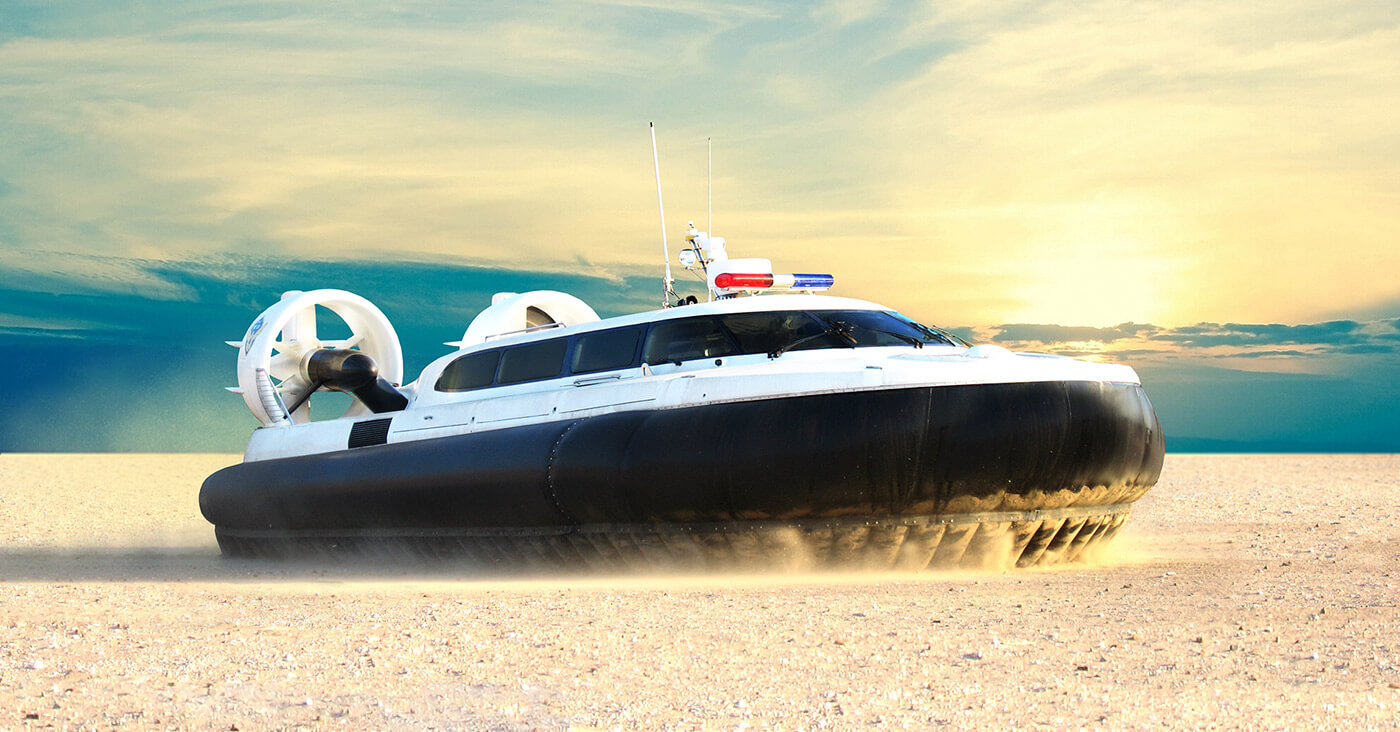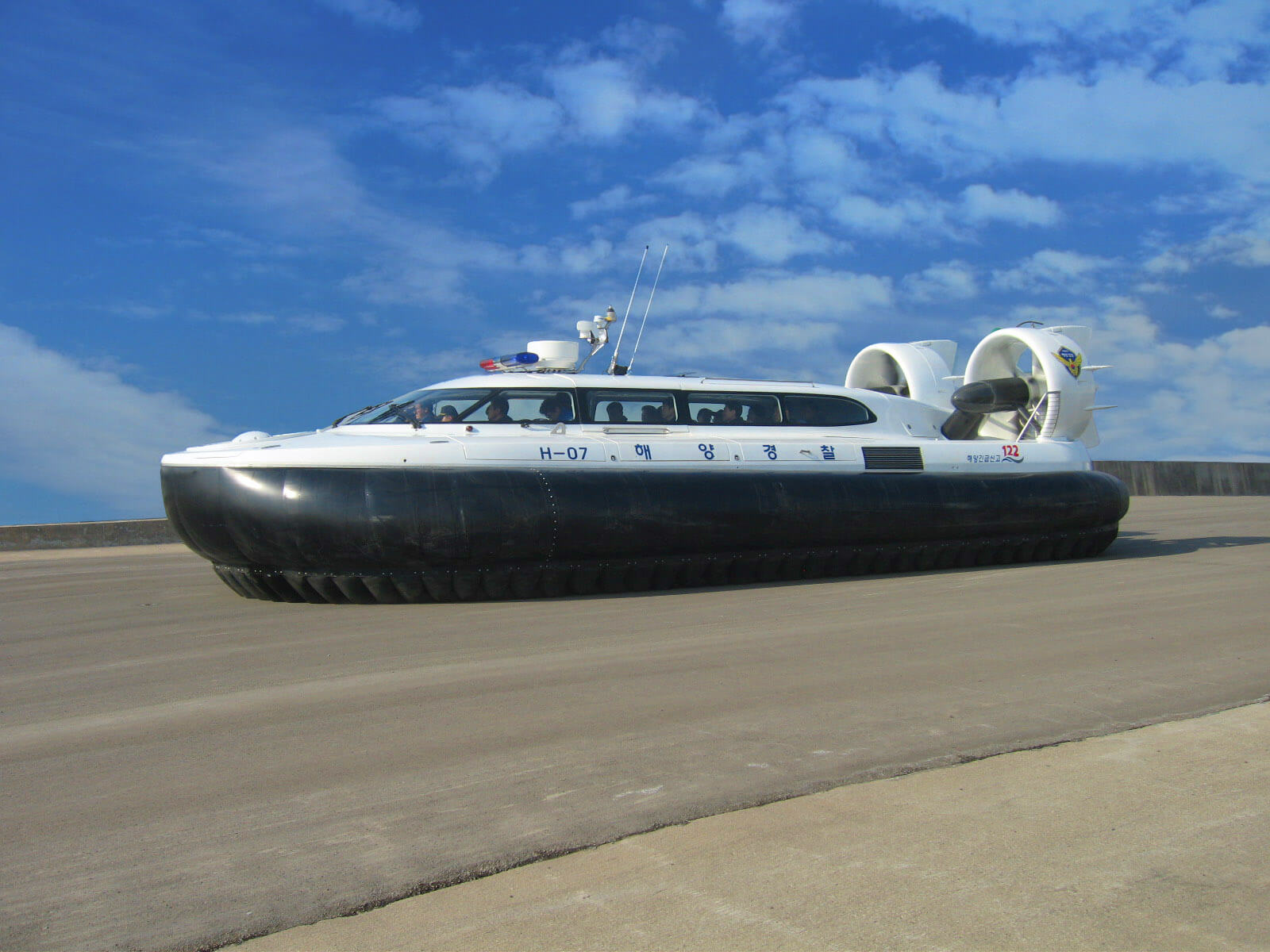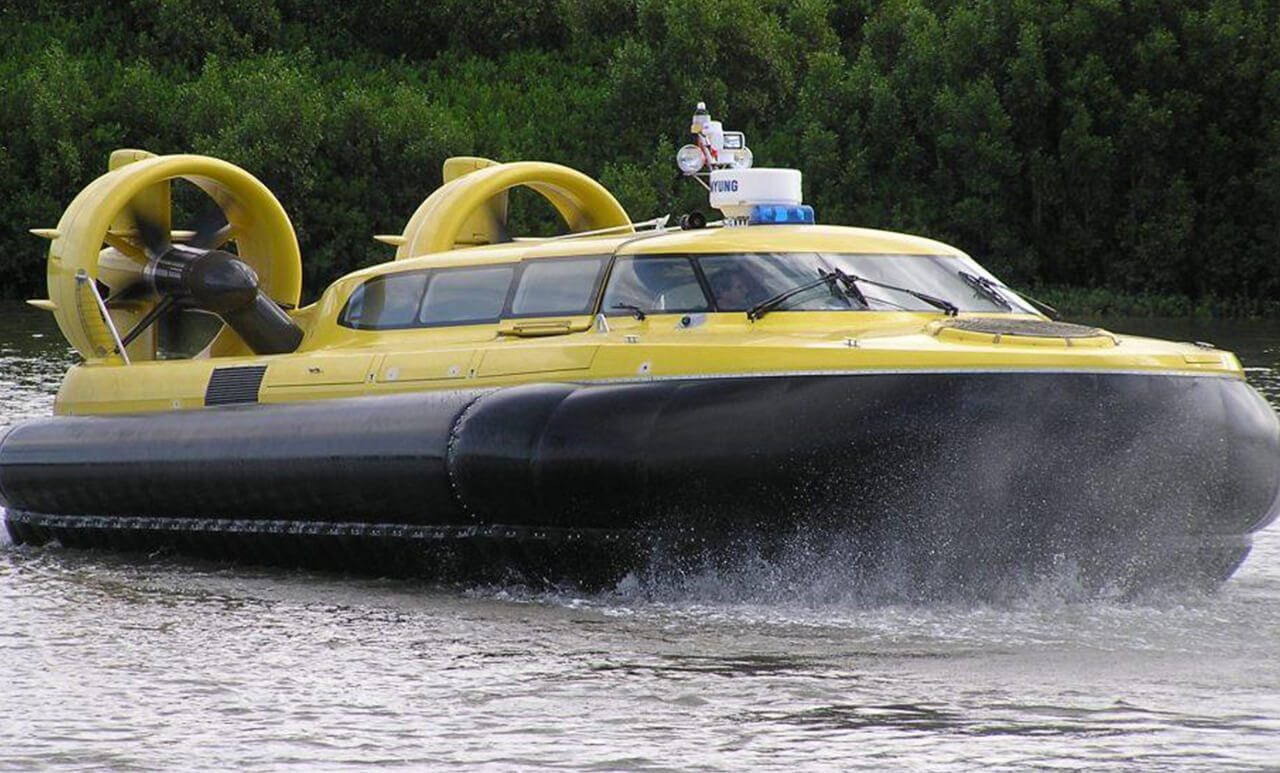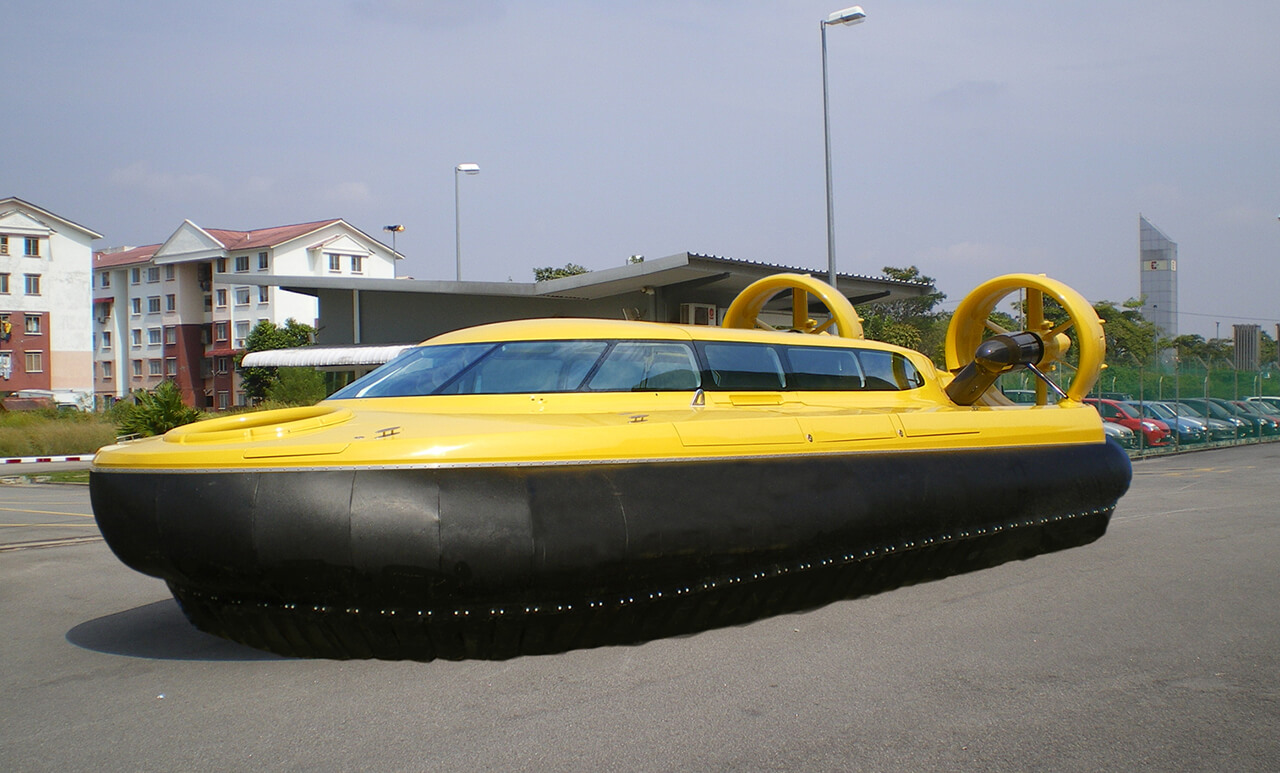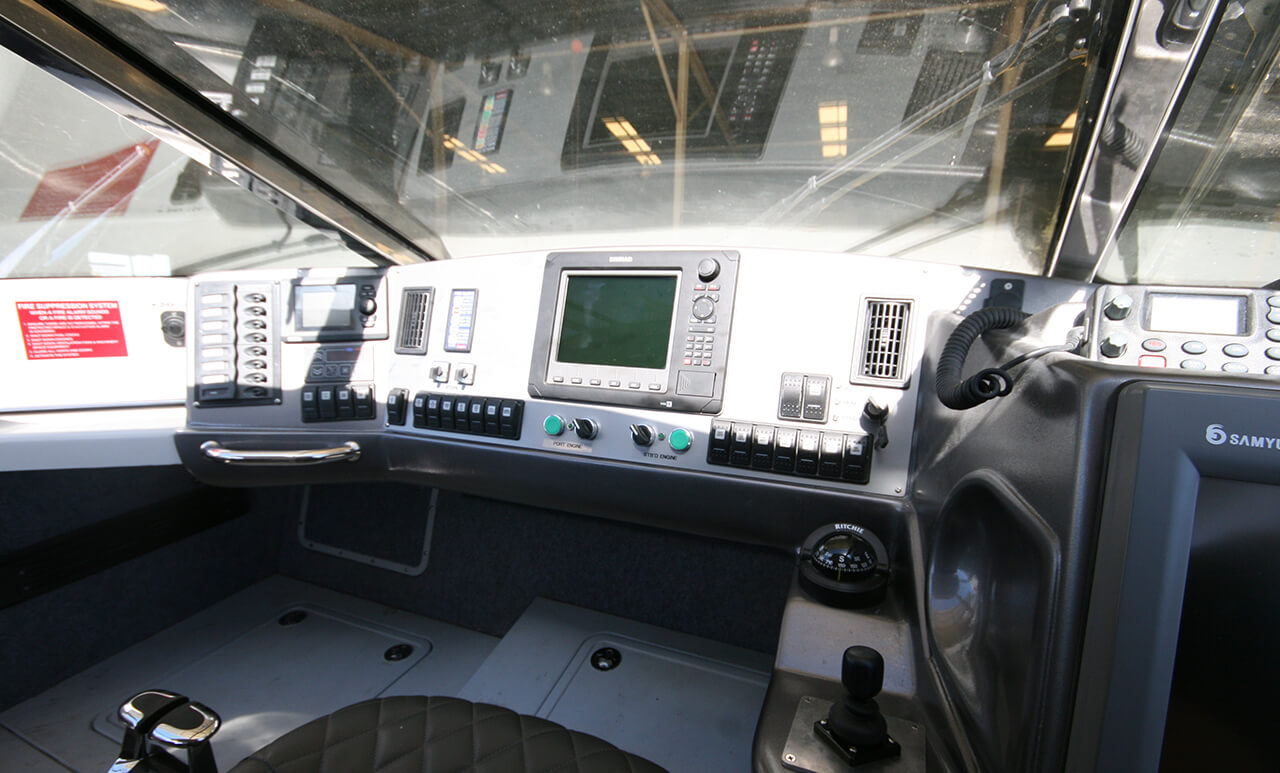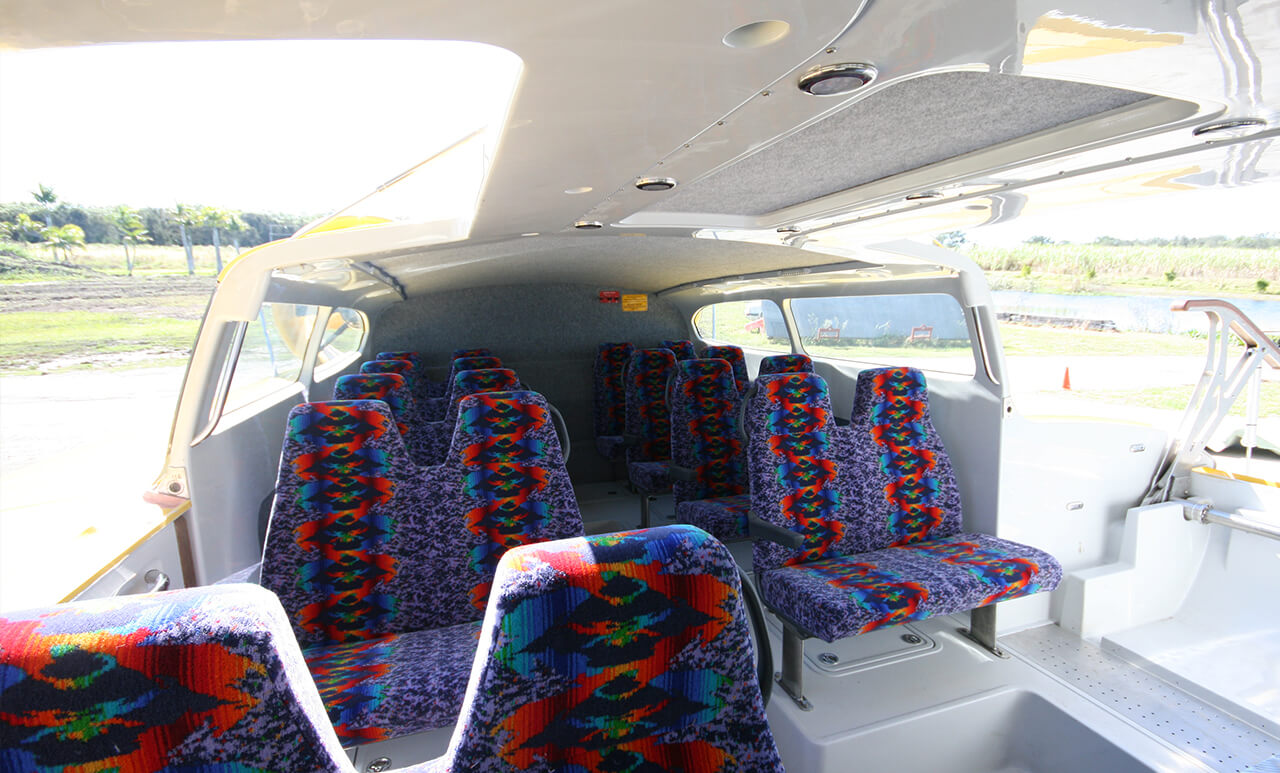Pioneer Mk3.1
Power, Performance and Speed at your Command
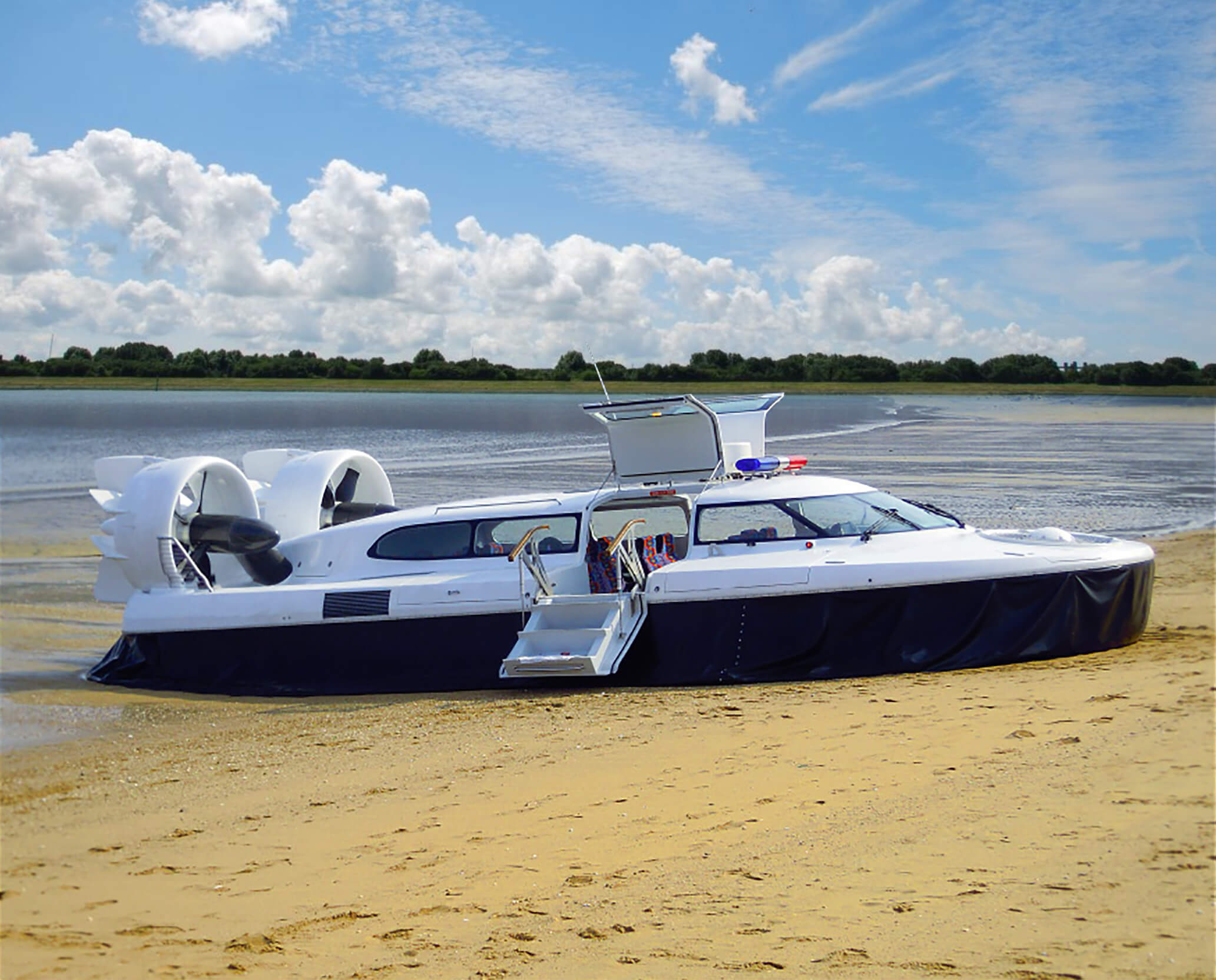
Pioneer Mk3.1 – Travel & Tourism
The Pioneer Mk 3.1 is a versatile machine and although has been designed with the transport and tourism industries in mind. The Pioneer Mk3.1 hovercraft can be operated by 1 crew and can carry 25 passengers or up to 2.5 tonnes payload. Passengers can recline in the comfort of the luxurious seating in an air-conditioned cabin while enjoying an uninterrupted view of the rapidly passing scenery. The Pioneer Mk3 is robust and dynamic in its performance, economical to operate and appealing to passengers and crew.
Power is economically provided by two diesel engines to cruise easily at 32 knots with much higher speeds available according to the surface conditions. The hull is manufactured from high technology composite materials which provide a lightweight, tough and durable structure requiring the minimum of maintenance. The windows are laminated safety glass and the fully pressurised bag skirt is of welded construction with easily replaceable rubber fingers. Twin IFA reversing propellers provide exceptional control ability in tight places.
Dual engines are used and critical transmission, electrical and hydraulic systems are duplicated for reliability and redundancy. Construction is in accordance with the 2000 HSC Code, BHSR, Australian USL class 1D, Transport Canada TP5579. Class certification is available for any of the above codes.

Pioneer Mk3.1 – Security Services
The Pioneer Mk3.1 can also be fitted with state of the art electronics and ballistic protection making her ideal for security applications such as waterway and border patrol, coast guard and other military applications and search and rescue.
Options Include;
*Custom Military Grade Paint
*Adjustable/removable seating
*Tie down cargo space via a cabin hatch in the roof
*Ballistic Protection
*Weapon Mounts
*Galley
*Fresh hot and cold water systems
*Refrigeration
*Marine Toilet
*Alternative sources of electric power
*Extensive storage
The design of the Pioneer Mk3.1 utilises modern technologies of design and equipment to achieve exceptional performance while retaining a simplistic approach to construction and maintainability. High powered twin engine/twin reversible thrust propellers provide redundancy, performance and unsurpassed maneuverability uncommonly found in hovercraft of this class. The proprietary in-flight adjustable propellers provide full steering control and give immediate reverse capability which is essential for parking into or exiting tight places or turning 360 degrees ‘on the spot’. Twin propellers provide control and redundancies which are not possible to achieve with a single propeller.
All of the AirLift Hovercraft designs utilise fully pressurised bag and finger skirts which are truly amphibious.
Technical Specifications
| |||||||||||||||
| Cockpit length | 5.70 m | ||||||||||||||
| Cockpit width | 2.50 m (@ bottom of windows) | ||||||||||||||
| Wave Height Clearance | 1.5 m at a pitch of 10 metres or more | ||||||||||||||
| Normal operating speed | 40 to 65 km/hr (22 to 35 kts) on smooth water | ||||||||||||||
| Accommodation | This cabin is fully enclosed with two large gull wing doors. Air-conditioned comfort for 1-2 crew plus 23 to 25 passengers. | ||||||||||||||
| Payload (for a water-start) | 2,500 kg normal. Overload capable to 3,000 kg with reduced performance. | ||||||||||||||
| Engine | 2 x 195kW Diesels. | ||||||||||||||
| Fuels | Diesel DF-2, JET-A, JP-8 | ||||||||||||||
| Endurance (good conditions) | At cruise, 5 to 6 hours. Up to 10 hours if using ballast fuel load. | ||||||||||||||
| Skirt type | Pressurised bag with detachable fingers. | ||||||||||||||
| Thrust system | Two in-flight adjustable (IFA) and reversing propellers. | ||||||||||||||
| Lift System | Co-axial fans direct coupled to hydraulic motors. | ||||||||||||||
| Steering | 4-Power assisted rudders. Differential control of the IFA propellers. Note that steering is available during reverse travel due to the twin propeller layout. The IFA propellers also provide for 360 degree swivel with no forward motion. | ||||||||||||||
| Pitch control (longitudinal trim) | Dynamic control by 8 – power assisted elevators. Static control by transferring fuel fore and aft between the front and rear fuel tanks. | ||||||||||||||
| Roll Control | By differential action of the elevators. | ||||||||||||||
| Instrumentation & Displays | Instrumentation by combination of analogue type displays and flat screen displays. | ||||||||||||||
| Controls | All controls ‘Fly-by-Wire’ with programmable logic, programmable displays, warnings and safety interlocks. Data-logging available. | ||||||||||||||
| Navigation & Communications | Standard – Magnetic Compass, VHF transceiver, Chart Plotter (with World Maps), Man Overboard Signalling System position Optional – Digital radar, FLIR night vision system, Reversing and cabin cameras, AIRMAR PB200 weather station, PA and entertainment system for passengers | ||||||||||||||
